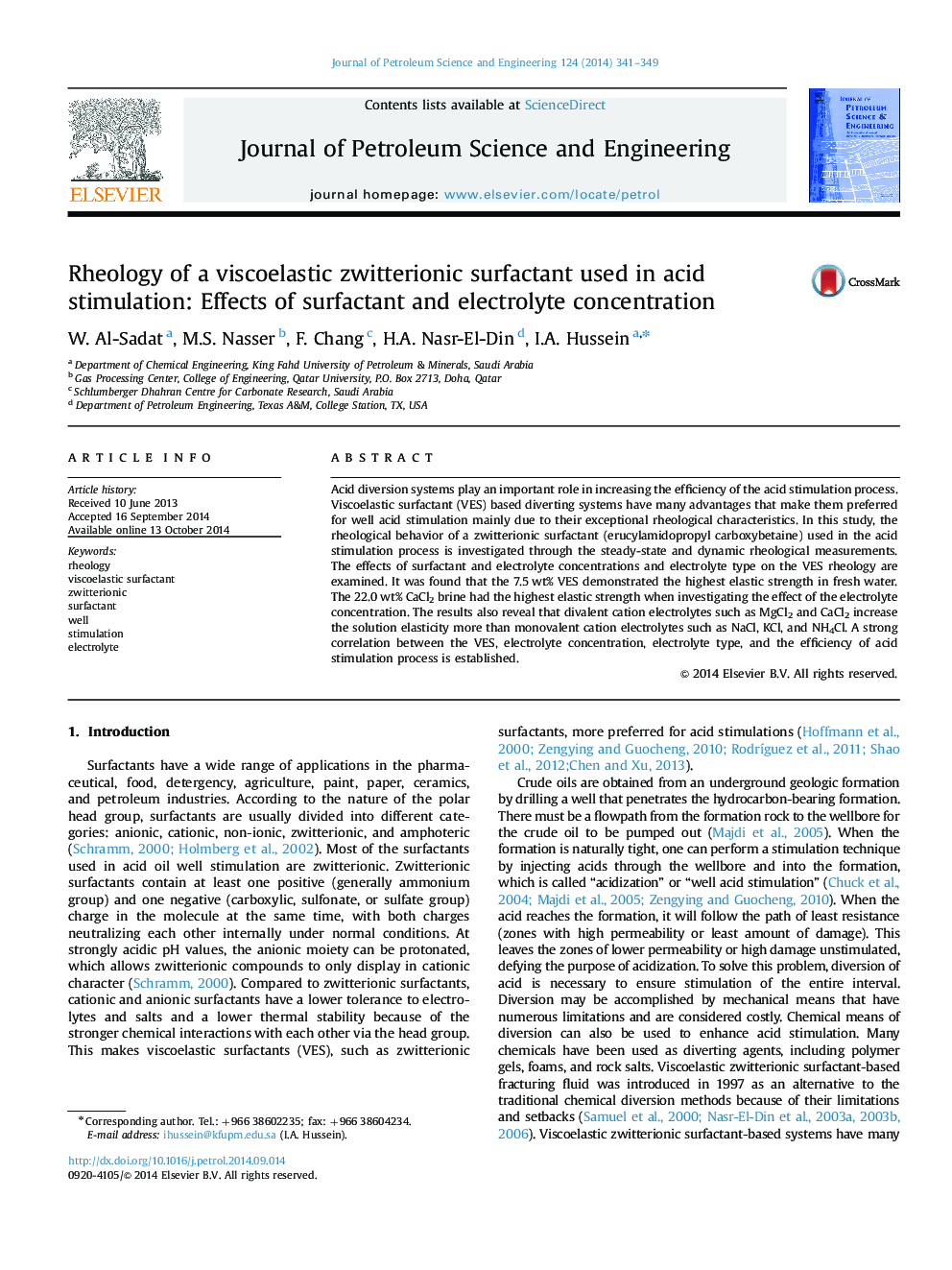| Article ID | Journal | Published Year | Pages | File Type |
|---|---|---|---|---|
| 1754956 | Journal of Petroleum Science and Engineering | 2014 | 9 Pages |
•VES used in the wells acid stimulation have complex rheological properties.•7.5 wt% VES demonstrated the highest elastic strength in fresh water.•Divalent cation salts increase the VES elasticity more than monovalent cation.
Acid diversion systems play an important role in increasing the efficiency of the acid stimulation process. Viscoelastic surfactant (VES) based diverting systems have many advantages that make them preferred for well acid stimulation mainly due to their exceptional rheological characteristics. In this study, the rheological behavior of a zwitterionic surfactant (erucylamidopropyl carboxybetaine) used in the acid stimulation process is investigated through the steady-state and dynamic rheological measurements. The effects of surfactant and electrolyte concentrations and electrolyte type on the VES rheology are examined. It was found that the 7.5 wt% VES demonstrated the highest elastic strength in fresh water. The 22.0 wt% CaCl2 brine had the highest elastic strength when investigating the effect of the electrolyte concentration. The results also reveal that divalent cation electrolytes such as MgCl2 and CaCl2 increase the solution elasticity more than monovalent cation electrolytes such as NaCl, KCl, and NH4Cl. A strong correlation between the VES, electrolyte concentration, electrolyte type, and the efficiency of acid stimulation process is established.
Graphical abstractFigure optionsDownload full-size imageDownload as PowerPoint slide
